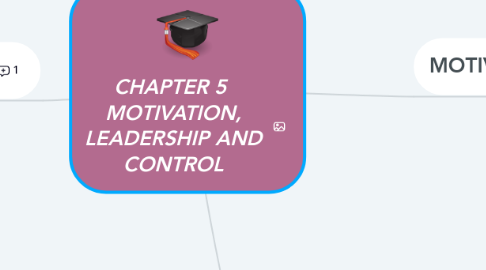
1. CONTROLLING
1.1. THE IMPORTANCE OF CONTROLLING
1.1.1. It facilitates co-ordination
1.1.2. It helps in planning.
1.1.3. Protecting the workplace
1.2. PROCESS OF CONTROLLING
1.2.1. Establish performance objectives and standards
1.2.2. Measure actual performance
1.2.3. Compare actual performance with objectives and standards
1.2.4. Take necessary action
1.3. THREE TYPES OF CONTROL
1.3.1. Concurrent Controls
1.3.2. Feedback Controls
1.3.3. Feedforward Controls
2. MOTIVATION
2.1. FORCES AFFECTING PEOPLE'S BEHAVIOR
2.2. MODELS OF EMPLOYEE MOTIVATION THEORIES
2.2.1. Classical Theory/Scientific Management
2.2.2. Behavior Theory
2.2.3. Contemporary Motivational Theories
2.2.3.1. Theory X
2.2.3.2. Theory Y
2.2.3.3. Maslow’s Hierarchy of Needs Model
2.2.3.4. Two-factor Theory
2.2.3.5. Expectancy Theory
2.3. Strategies for Enhancing Job Satisfaction and Morale
2.3.1. Reinforcement/behavior modification
2.3.2. Management by objectives
2.3.3. Participative management and empowerment
2.3.4. Modified work schedules
2.3.5. Job enrichment and job redesign
3. LEADERSHIP
3.1. MANAGERIAL STYLES AND LEADERSHIP
3.1.1. Managerial Styles- Patterns Of Management Behavior In Dealing With Employees
3.1.1.1. Autocratic Style
3.1.1.2. Democratic Style
3.1.1.3. Free-rein Style
3.1.2. Leadership - Motivating Others To Work
3.2. 21ST CENTURY LEADERSHIP/MANAGEMENT
3.2.1. Motivation
3.2.1.1. Varying lifestyles reflect varying Goals of employee
3.2.2. Leadership
3.2.2.1. Diversity of workplace = Diversity of leaders

